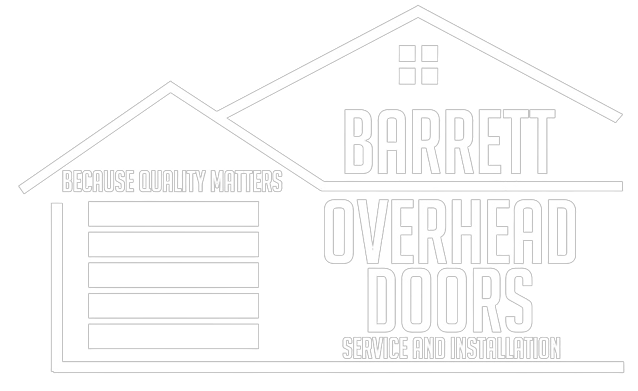FAQs
Barrett Overhead Doors Utah
Why won't my garage door close or open?
Several factors can prevent a garage door from opening or closing properly. Common issues include broken springs, misaligned safety sensors, disconnected openers, or problems with remote controls or wall switches. Power outages, depleted batteries, or obstructions in the sensor beam can also cause malfunctions. Occasionally, bent tracks or misaligned rollers may be the culprit. Our technicians can inspect these components to diagnose the problem. Regular maintenance can prevent most of these issues, ensuring smooth operation. Contact Barrett Overhead Doors Utah to set up a maintenance plan.How long do garage door springs last?
Garage door springs typically have a lifespan of seven to 10 years or approximately 10,000 cycles. One cycle is defined as the door opening and closing once. If your garage door is used frequently, the springs may wear out more quickly. There are two primary types of springs: torsion and extension, both with limited durability. Due to the potential dangers involved, spring replacement should be performed by professionals to ensure proper installation and safety.How often should I service my garage door?
Annual servicing is recommended for garage doors to maintain safety and extend their lifespan. During a service, our technicians inspect critical components such as springs, cables, rollers, and openers for signs of wear, helping to prevent costly breakdowns. Maintenance tasks include lubricating moving parts, securing loose hardware, and testing the door's balance and auto-reverse functionality. Regular upkeep reduces the likelihood of door failure and prolongs the life of both the opener and the entire door system.What is the R-value of a garage door?
The R-value of a garage door indicates its thermal resistance, measuring its insulation effectiveness. A higher R-value signifies better insulation, which aids in temperature regulation and energy efficiency. This is particularly important for attached garages or those used as workspaces. Standard non-insulated doors typically have R-values between 0 and 3, while insulated doors can achieve R-values of 12 to 18 or higher.How long should a garage door opener last?
The average lifespan of a garage door opener is between 10 to 15 years, varying based on quality and usage frequency. Different types of openers, such as chain drive, belt drive, and screw drive, may have varying lifespans. Regular maintenance and responsible use can extend an opener's operational life. If your opener is experiencing slowness, excessive noise, or lacks modern features like Wi-Fi connectivity, it may be time to consider an upgrade.What colors can garage doors come in?
Garage doors are available in a wide spectrum of colors, including white, black, gray, brown, beige, red, green, blue, and custom paint finishes. Manufacturers often provide standard color options and may offer customization to match your home's exterior. Selecting an appropriate color can enhance curb appeal and complement your property's architectural style.Can my non-insulated garage door be insulated?
Non-insulated garage doors can indeed be insulated. This upgrade offers benefits such as improved energy efficiency, better temperature control within the garage, and reduced external noise transmission.I lost my garage door remotes. Can I get new ones to replace them?
Replacing lost garage door remotes is a straightforward process. To obtain new remotes, identify your garage door opener's brand and model number, then contact our office. We can provide compatible replacement remotes for your specific opener model.If I hit a section of my garage door, do I have to replace the whole door?
Damage to a single panel of your garage door doesn't necessarily require a full door replacement. In many instances, it's possible to replace just the damaged section if the rest of the door remains structurally sound. This approach is often more cost-effective than replacing the entire unit. Contact our team to determine if panel replacement is feasible for your specific garage door model.How do I tell if my garage door spring is perfectly balanced?
To assess your garage door spring's balance, first disconnect the opener by pulling the emergency release cord. Manually lift the door to the halfway point. If it remains stationary without rising or falling, the spring is correctly balanced. If the door drops shut or rises rapidly, the spring tension requires adjustment. An improperly balanced door can strain the opener mechanism and pose safety risks.





